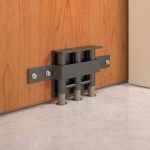 The Partner Alliance for Safer Schools (PASS) has released the fourth edition of its Safety and Security Guidelines for K-12 Schools, which provides school administrators, school boards and public safety and security professionals with guidelines for implementing a layered and tiered approach to securing and enhancing the safety of school environments.
The Partner Alliance for Safer Schools (PASS) has released the fourth edition of its Safety and Security Guidelines for K-12 Schools, which provides school administrators, school boards and public safety and security professionals with guidelines for implementing a layered and tiered approach to securing and enhancing the safety of school environments.
The fourth edition of the guidelines is completely revised under a simplified structure and greatly expanded to now cover best practices on a district-wide level that relate to safety and security and additional areas such as school transportation, cybersecurity and network infrastructure, architectural features and emergency communications.
“The safety and security challenges schools face today are more multifaceted and complex than ever before, and protecting students and staff requires a comprehensive approach to these challenges,” said Guy Grace, PASS chairman and director of security and emergency planning for Littleton Public Schools. “We are proud to build on the PASS guidelines, which present the most comprehensive information available on best practices for securing school facilities, an essential component supporting all-hazards approaches to school safety.”
The PASS Guidelines identify and classify best practices for securing K-12 facilities in response to urgent needs for information identified by the education community. The guidelines aim to answer two key questions – “What should we do?” and “How do we prioritize?” – and include:
- Specific actions that can effectively raise the baseline of security
- Vetted security practices specific to K-12 environments
- Objective, reliable information on available safety and security technology
- Assessment of current security measures against nationwide best practices
- Multiple options for addressing security needs identified
- How to distinguish needed and effective solutions from sales pitches on unnecessary products
The guidelines describe approaches within five physical layers for school facilities: district-wide, the property perimeter, the parking lot perimeter, the building perimeter and the classroom/interior perimeter. Within each layer, the resource outlines key safety and security components, such as policies and procedures, people (roles and training), architectural components, communication, access control, video surveillance and detection and alarms.
“We believe this approach provides a simplified way for administrators to effectively evaluate their security infrastructure, prioritize investment and maximize security in ways that are consistent with longstanding security practices and ensure a baseline of facility security measures appropriate for school facilities,” said Mark Williams, PASS vice chairman.
Established in 2014, PASS brings together expertise from the education community, law enforcement and the security industry to develop and support a coordinated approach that can assist school administrators in making effective use of proven security practices specific to K-12 environments, including elementary, middle and high schools. Learn more about PASS on its newly redesigned website.
The latest guidelines are available at no cost on the PASS website, and PASS encourages education professionals, public safety personnel and security solutions providers to take advantage of these free resources.
You need to login or register to bookmark/favorite this content.






Lori:
Thanks for posting this information. There is also an assessment/checklist document available to assist in completing building assessments. Great tools for those who are working with end users to navigate the complexity of securing their environments. Important work! Thanks for your ongoing work to promote security and safety!
Great info Lori for a very complicated subject in light of so many illegal home made remedies.
Thanks